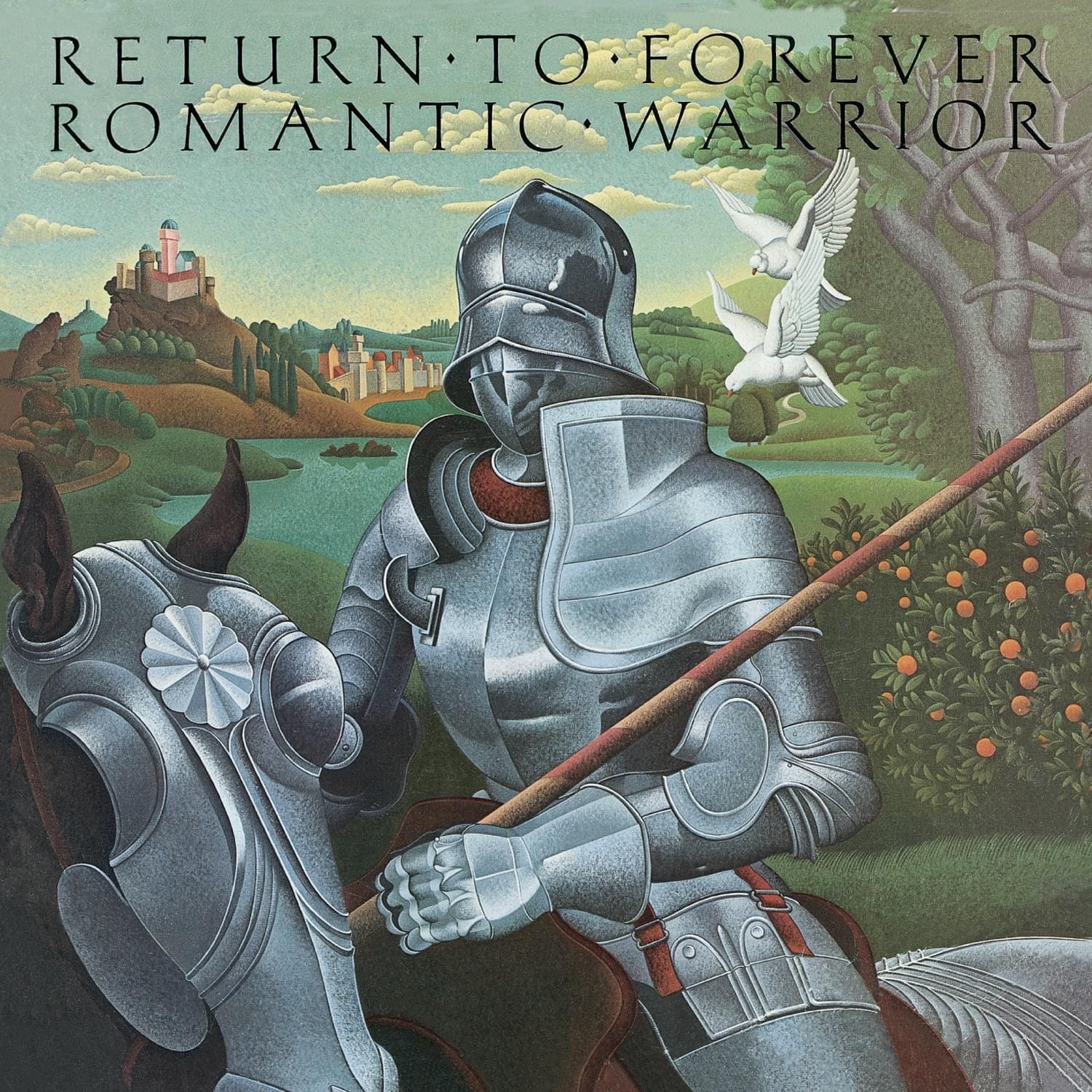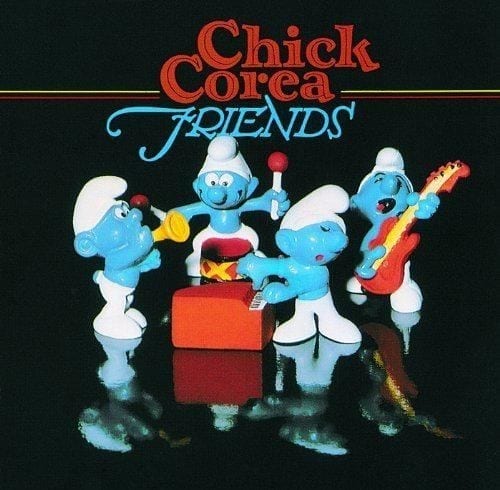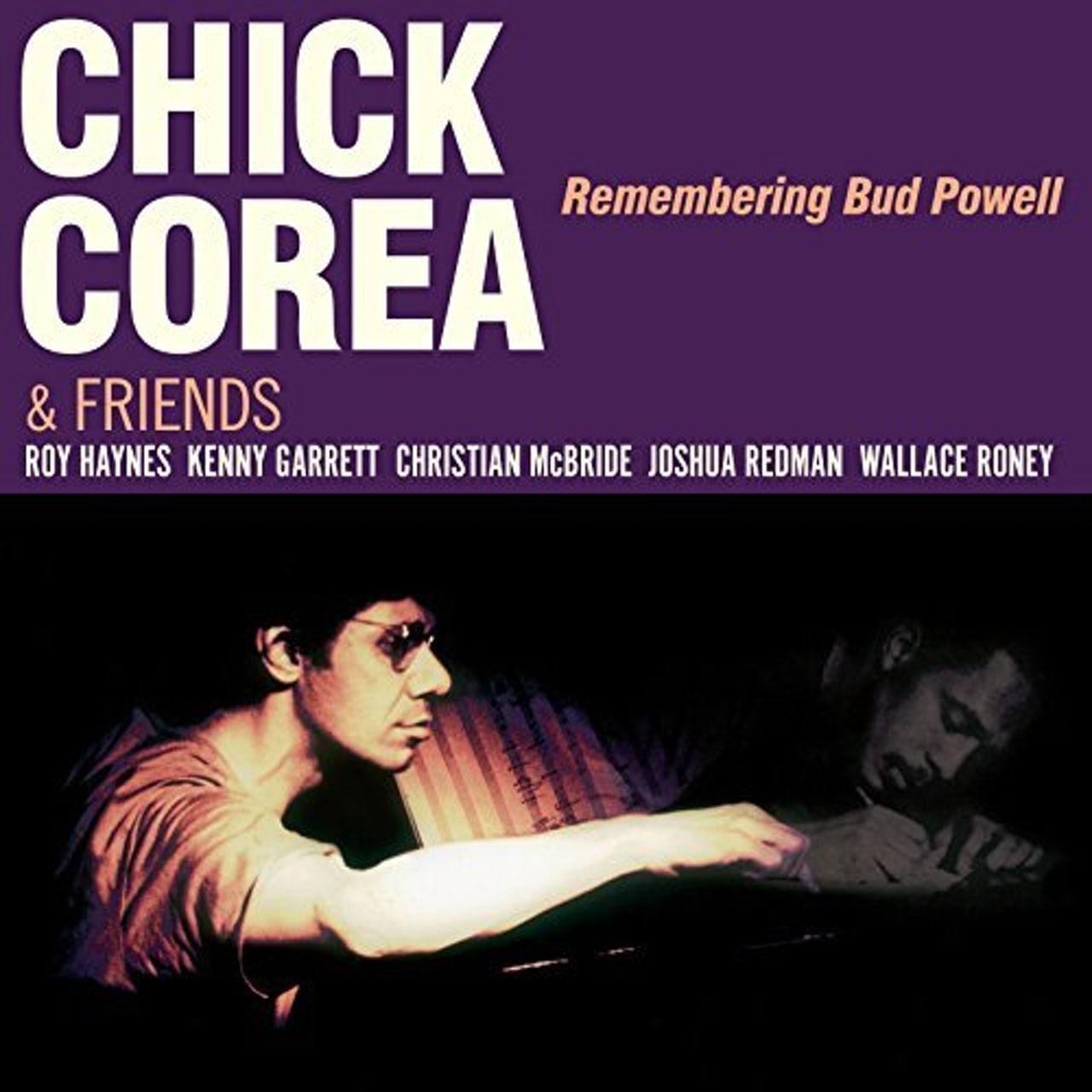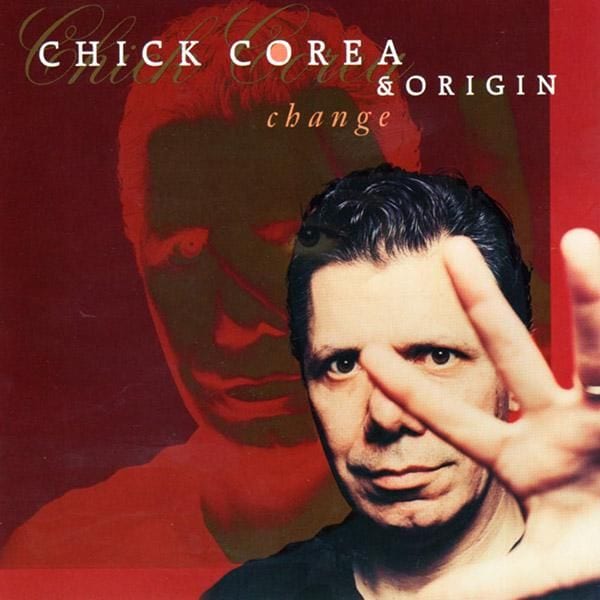7. Romantic Warrior (Sony, 1976)

The Band: The electric Return to Forever band with Corea and Clarke (electric, mostly), Lenny White on drums, and Al Di Meola on guitar
Its Brilliance: Corea turned RTG into a jazz-rock “fusion” band after two recordings, keeping Clarke and bringing on Lenny White and a few guitarists, finally settling on the young Al Di Meola. The band made a series of fusion records that genuinely defined the space in conjunction with several other Miles Davis alumni. Hancock created his funky “Headhunters” band, and Tony Williams was fusing rock and fiery organ jazz in his “Lifetime” band. Wayne Shorter and Joe Zawinul created the famous Weather Report, which shifted over the years from a kind of electronic free jazz to a set of ingenious arrangements dominated by Zawinul’s keyboards. John McLaughlin made a few Mahavishnu Orchestra albums that put progressive rock and jazz in conversation.
The electric Return to Forever was the closest to the last of these in texture and approach but had the advantage of Corea’s compositions, which were catchy, grand, and fabulous vehicles for improvising. Romantic Warrior was the last album of this band’s run and the first that felt subtle and orchestral, magnificent, and sometimes bombastic. The synthesizers finally sound as rich and as artful as the writing (mostly), and the repertoire includes excellent tunes from the other band members. Both the best track, an all-acoustic groover called “The Romantic Warrior”, the most complexly absurd one (“Duel of the Jester and the Tyrant, Part I and III”) are Corea’s, which sums it up.
Killer Tracks: Lenny White’s “Sorceress”, which features lovely lines for Rhodes and synth but then gives Corea a pungent acoustic piano solo; the breathtaking title track.
Listen: Spotify
8. Friends (Polydor, 1978)

The Band: A quartet featuring Joe Farrell’s reeds, Eddie Gomez’s acoustic bass, and Steve Gadd on drums.
It’s Brilliance: By the late ’70s, Corea was famous for but done with Return Forever. He had just created four big concept albums in My Spanish Heart, The Leprechaun, The Mad Hatter, and Secret Agent each of which was loaded up with strings, horns, vocals, and thematic business. It would become a pattern for Corea that, at just such moments, he would lean back to a recording more firmly rooted in straight-ahead jazz. Friends gets mocked for its cover featuring four Smurfs, but the covers with Corea posing as a secret agent, a Lewis Carrol character, and a Leprechaun are significantly worse.
Friends‘ music is gorgeously relaxed and rich, largely swinging melodic jazz that features both piano and Rhodes, both saxophones and flute. Farrell’s soprano solos are distinctive and airy, and Gomez’s beautifully recorded bass solos are worth the entire album, singing in the instrument’s upper register most often. And then there are the Corea compositions: no dueling jesters or grand build-ups, just attractive melodies that enrich the listener without requiring that she or he have a tolerance for the boldest post-bebop adventures.
Killer Tracks: “Waltse for Dave” was surely written for Brubeck and is marked with his easy charm. “Samba Song” contains a fair number of tricky parts/sections and might have been a bombastic Return to Forever foray but, instead, is just exciting modern jazz. Which, frankly, is better, particularly when the grooving section starts and Farrell digs in on tenor sax.
Listen: Spotify
9. Three Quartets (Stretch, 1981)

The Band: Another quartet, of course, with Gomez on bass, Gadd on drums, and Michael Brecker’s tenor saxophone
It’s Brilliance: Now on his own record label, Corea continued to toggle between more traditional (“serious”?) jazz projects and music created for a larger audience. The original release’s compositions were three “quartets” meant to be like Bartok’s body of classical “quartets”. This is the Friends band but made more weighty with Brecker’s keening tenor being central to each track and no electric piano. The four original tracks (one dedicated to Ellington and one to Coltrane, serious business, like I said) were mainly muscular and intelligent, full of memorable riffs that link together in cascades.
“Quartet No. 2” uses a lovely section for solo piano to connect different elements, and the four voices are all orchestrated with more care than is typical for a jazz blowing date for a quartet. All that said, the session is loose too because the band is brilliant. For fans of Steve Gadd’s drumming with bands like Steely Dan or Paul Simon, here you get to hear him as a real jazz player, but one with an incredible ability to hit pockets. The session’s loose/relaxed nature is clearer on the reissue, which included four additional performances that are, well, more fun. That consists of a cool reading of Charlie Parker’s “Confirmation” that is a razzle-dazzle duet for just Brecker and Gadd, which I imagine that both saxophonists and drummers still haven’t fully recovered from.
Killer Tracks: “Hairy Canary”, a Corea bebop line that delights, and “Quartet No. 2, Part 1 (Dedicated to Duke Ellington)” with its long solo-piano introduction and then a breathtaking melody for Brecker.
Listen: Spotify
10. Remembering Bud Powell (Stretch, 1997)

The Band: Wallace Roney, trumpet; Kenny Garrett, alto saxophone; Joshua Redman, tenor saxophone; Christian McBride, bass; Roy Haynes, drums.
It’s Brilliance: Starting in the mid-1980s, Corea recorded six times with a new fusion group he called “The Elektric Band”—all for the label GRP, where smooth jazz had made a comfy home. There are fans of this music, which can be compelling and professional, but was also doused in MIDI synth sounds, drum programming, and candy-tone saxophony. Corea seemed to know that a steady diet of this stuff was nutritious for his bottom line but not for his soul because he simultaneously recorded and toured with an “Akoustic Band” that was a trio, doing standards and straight-ahead repertoire. The playing was sharp, but the band (particularly drummer Dave Weckl) was not subtle.
So, without adding an out-of-place “K” to the titles, he played some neo-traditional dates, as befitting a decade when Marsalis-led revivalism was both a trend and tonic. Corea recorded solo piano records of standards that were exceptional, he reunited his old trio, and he continued to collaborate with Gary Burton. But this date stood out, as he challenged himself with tunes by or associated with one of his critical influences and with a group of shining younger players (and Roy Haynes, who seemed to be getting younger every year). It is a bebop date, yes, but all the players are playing in late-century individual joy. Corea’s pianism is best of all, sometimes slightly raggy, other times Monk-ish, always cliche-free.
Killer Tracks: “Dusk in Sandi” for just the trio. An uptempo “Tempus Fugit”. A solo-piano “Celia”.
Listen: Spotify
11. Change (Stretch, 1999)

The Band: A sextet Corea called “Origin”, with Bob Sheppard and Steve Wilson on woodwinds, Steve Davis on trombone, and a new rhythm section featuring Avishai Cohen on bass and Jeff Ballard’s drums
It’s Brilliance: The Akoustic Band didn’t use electronics, but it always felt like a stunt—Hey, these fusion guys can play real jazz too! (They could, of course, but the playing didn’t sound organic.) The rhythm section for Corea’s new band, Origin, was heaps better, and they would play together as a trio too, making some excellent records. But the one Origin studio record is a lost classic. Wilson and Sheppard played clarinets (Bb and bass), flutes, and all the saxophones. Wilson gave the band a darker bottom as well, allowing Corea’s superb tunes to be colored in pastels as well as acrylic—and no chilly synth shiver was there to make the band sound arena-ready. Change was precisely that, enlivening Corea’s writing and sense of orchestration while still allowing him to indulge in the delights of dancing rhythms (“Armando’s Tango”) and lyric flight (“The Spinner”). For all of Corea’s toggling from fusion back to straight-ahead acoustic jazz over the years, this was the most compelling and original.
Killer Track: “Awakening” with its propulsive piano/bass unison lines and driving groove beneath a muscular head. It’s the kind of music that does not immediately obviously sound like Corea recreating his own sound, except that he could have only written it.
Listen: Spotify
- Chick Corea: The Spanish Heart Band-Antidote
- Chick Corea / Eddie Gomez / Paul Motian: Further Explorations
- Chick Corea and Bèla Fleck: The Enchantment
- Chick Corea and Jazz at Lincoln Center Orchestra: 16 May 2013
- Chick Corea & Gary Burton: Hot House
- Chick Corea: Selected Recordings: Rarum III
- The Definitive Chick Corea on Stretch and Concord
- Chick Corea / Stanley Clarke / Lenny White: Forever
- Chick Corea Trio: Trilogy
- Chick Corea Elektric Band: To the Stars


![Call for Papers: All Things Reconsidered [MUSIC] May-August 2024](https://www.popmatters.com/wp-content/uploads/2024/04/all-things-reconsidered-call-music-may-2024-720x380.jpg)



